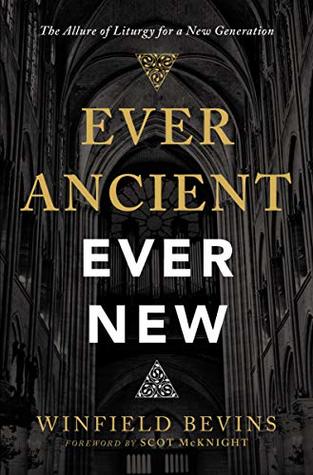More on this book
Community
Kindle Notes & Highlights
I longed for a sense of connection to the past, to the traditions, practices, and beliefs that have shaped Christian experience for the past two thousand years.
I found that the liturgy enabled me to experience Christ, not just in my head and heart, but also through my bodily senses. I felt a palpable sense of the sacred in that worship service, a connection with something transcendent and other-worldly.
The end result of attempts to “woo” the world with the world’s ways has produced a generation of consumers—individuals who sit in the driver’s seat and dictate what and how the church should meet their needs—rather than radically committed disciples of Jesus Christ.
Liturgy is a re-enactment of the divine drama.
Liturgy frees us from having to create our own story from our limited perspective and experience. Instead, it invites us to find our place and allows us to join an existing story, the story God has already written for his people.
Much of contemporary Christian worship tends to focus on the individual. It is “me-centered,” written and designed to emphasize how “I” feel or what I must do. It feeds our ego and our sense of self-importance, but these are not helpful or formative for following Jesus on the path of discipleship. Liturgy is designed to free us from the worship of self in order to focus our hearts on the triune God.
Young adults are longing for something to believe in and a story to be a part of, and for many, the liturgical tradition provides them with that sense of stability, a solid anchor amidst the uncertainty of their own struggles and the transitions of postmodern culture.
Christianity is unified by its center, not by its boundaries.
Christianity at its best avoids both fundamentalism and liberalism, the first of which rejects culture and the latter of which accommodates too much to culture.
LifeWay research found that unchurched Americans prefer churches that look more like a medieval cathedral than a modern church.
icons are windows that remind us that we belong to the kingdom of God.
TAIZÉ COMMUNITY:
prayer, sacred study of Scripture, communal work, silence and solitude, and spiritual friendship.
‘A live tradition extends in both directions in time.’ While he was referring to artists, I believe it applies to the church as well. In my time with the Community of St. Anselm, I have discovered it is possible to have a genuine love of prayers and songs in all their forms—old and new, liturgical and spontaneous. I have seen this work together beautifully.”
Churches led by those of the Baby Boomer generation are often structured around the needs and desires of individuals.
The word hospitality literally means “love of strangers,”
Neo-liturgical churches are engaging the poor, seeking to serve these communities, and living out an embodied spirituality that engages the world around them on a practical, tangible level—not just an emotional or inwardly spiritual level.
spiritual disciplines promote godliness and growth in grace.
practice freeing our minds from distraction so that we can fill them with God’s Word.
Like a vine growing on a trellis, they provide us with a structure for our faith to grow, not a straitjacket that binds us. Spiritual practices lay a foundation that keeps us grounded while freeing us to be open to the leading of the Holy Spirit. These ancient practices anchor the soul and provide tangible ways for people to build their faith and to grow in Christ.
liturgy, when rightly understood, should always lead to the sending activity of the church.
But a liturgical faith encourages a holistic approach, marrying the physical, emotional, and spiritual into one.
“Before finding the liturgical tradition, going to church had always been about me and my needs. Since I began attending my small liturgical church, I have come to realize that worship isn’t about me, but about God. Taking the Lord’s Supper each week has opened me up to the needs of the world as well in a very beautiful way.”
The liturgy of mission reminds us that church is not an end in itself. The church is sent into the world to fulfill the mission of God.
The church can easily become yet another vendor of goods and services, instead of being a place where we are challenged to grow, serve, give, and go back into the world in mission.
Learning theory tells us that one of the best ways to learn is by repetition, saying words and phrases over and over, and that children learn best by establishing these kinds of routines.


